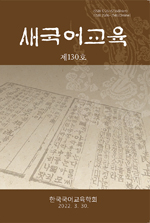『동국신속삼강행실도』(1617)는 근대국어 연구에 매우 귀중한 문헌이며, 동시에 중세국어와의 교량적 구실을 하는 문헌의 성격을 지닌다. 그러나 이 문헌이 중앙에서 간행하였으나 중앙 방언만을 반영한 것이 아니라 각 지역의 방언이 반영되었다는 뭉뚱그린 논의 이상으로 연구들이 전개되지 못하여, 국어사 연구뿐만 아니라 방언사 연구에서도 이 문헌의 활용은 그리 많지 않다. 이 문헌에 여러 방언이 반영된 것은 이 문헌의 간행 과정의 절차가 제대로 지켰는가 아니면 그렇지 못하는가에 따라서 나타난 현상이다. 집필 과정과 가제작 과정이 제대로 지켜진 시기에는 여러 사람의 언어 상태가 반영된, 즉 공통적인 중앙 방언이 반영되었으나, 그렇지 못한 때에는 최초로 언해한 낭청의 언어 상태가 그대로 반영되었던 것이다. 이는 각 낭청의 출신 지역과 이 문헌에 반영된 방언형에서도 일치되는 바이며, 낭청으로 참여한 남부 지역 관련 인물의 언어 즉, 전라 방언와 경상 방언이 반영되었기 때문이다.
『Dongguksinsoksamganghaengsildo』(1617) is very valuable literature for study on modern Korean language and plays a role of a bridge with Korean language in the Middle Age. However, in study on history of dialect as well as study on Korean language, the utility of the literature is still not enough. Only rough discussion that the literature reflected dialects of each region as well as central dialects although the literature was published from the central government has been developed. It depends on whether the procedure in the publishing process of the literature was kept in a proper way or not that diverse dialects are reflected in the literature. When the writing process and temporary manufacturing process were kept in a proper way, the central dialects selecting diverse people’s language conditions were reflected. However, when they were not kept in a proper way, it had features differing from the central dialect since language conditions of Nangcheong annotating it for the first time were reflected in annotationas it was. It agrees to each Nangcheong’s native place and the dialect types reflected in the literature. The study unveiled that diverse dialects were reflected in the literature since language of characters from the southern area participating as Nangcheong- namely Jeolla dialect and Gyeongsang dialect- were reflected in the literature.
1. 서론
2. 방언 자료로서의 가치
3. 방언의 반영 과정
4. 방언형과 현대 방언
5. 마무리
